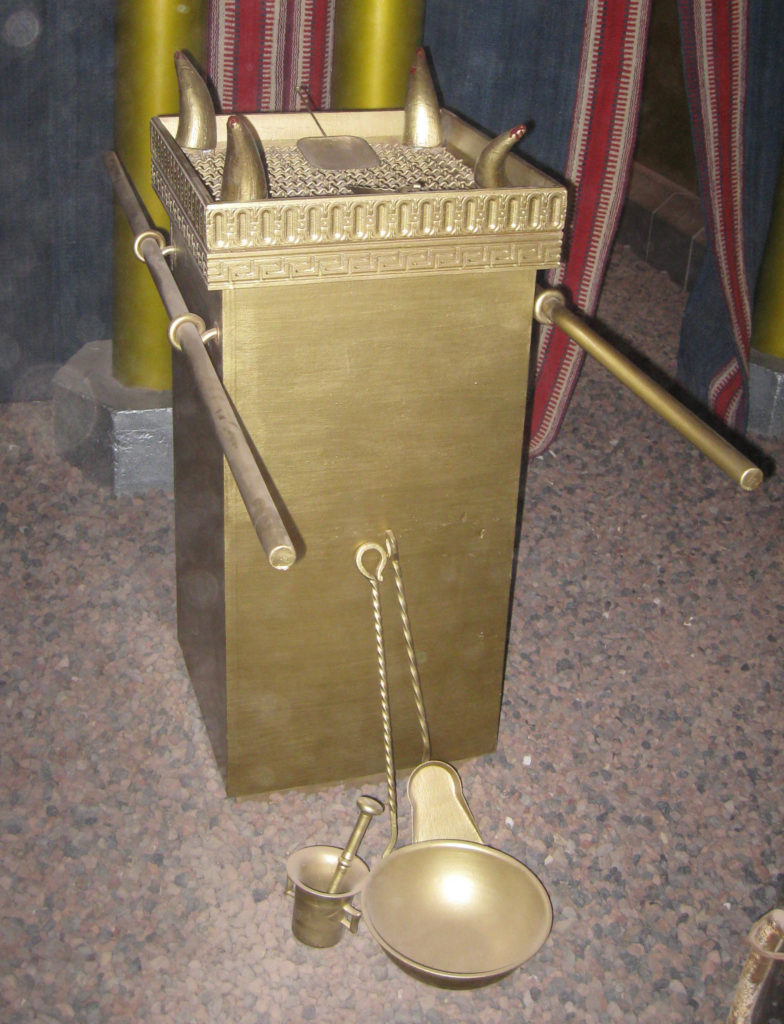Most of the furniture in the tabernacle had a functional purpose, the chandelier illuminated a dark room, while the table provided a place to place the proposal bread, while the altar of incense was conveniently designed to pleasantly perfume the air. In many ways, common furniture, although made of pure gold and richly decorated to fit the furniture of a king. The five senses were administered by the daily priestly ritual: sight, smell and taste were directed through the chandelier, the altar of incense and the table of bread of The Proposal, while the audience was given by the bells in the robe of the high priest, everything was conceived as a rich multisensory experience turned to God , not because it has meanings like ours, but as a recognition of the goodness of each of the different senses it has given us. Only the best of all could be good enough to be offered to the Creator of the universe.
In addition to its practical utility and sensory appeal, tabernacle furniture has also played a multifunctional symbolic role for God’s people. The seven lamps in the chandelier symbolize God’s blessing by shining on the twelve breads of the proposal representing the twelve tribes. The chandelier itself was a kind of miniature column of fire, recalling God’s presence with his people in the desert. The altar of incense formed the appropriate column of smoke to accompany the fire column of the chandelier.
- Furthermore.
- The smoke of the incense itself.
- Which was constantly rising from the altar.
- Came to symbolize the prayers of God’s people who constantly rose before the Lord; In the tabernacle.
- Incense could only be offered by the priests.
- Who thus served as mediators between the people and God.
- Symbolically carrying their prayers in the presence of the Most High.
- This idea is expressed in Psalm 141.
- 2.
- Where David prays to the Lord: “May my prayer come to you like incense.
- ” A notable violation of this protocol is recorded in 2 Chronicles when King Azariah (also known as Uzziah) attempted to enter the holy place and burn an incense offering in his own name.
- To the protests of the priests.
- Instead of the high status he was seeking.
- He was struck by leprosy.
- Which made him unclean and therefore could not enter a part of the temple complex in the future (26: 16-21).
The altar of incense was also linked to the sacrificial rituals of Israel; When a sacrificial offering was required due to a high priest’s sin, the blood of the offered bull was to be placed on the horns of the altar of incense and spread over its base (Lev 4. 3-7) . Already a community sin offering as a whole it required a similar sacrifice, the blood also being placed on the horns of the incense altar, however, the blood of the offered bull had to be shed on the minor. sacred altar of burnt offering (vv. 13-18). However, even these regular sacrificial offerings for sins were not enough to deal with the accumulated contamination caused by people’s sin; In order to prevent the earth from becoming unsuitable for divine habitation, the high priest was to enter the Holy of Holies once a year on the Day of Atonement, carrying with him a portable incense that would provide a protective cloud of smoke, under which he could safely carry the blood of the purification offerings and apply it to the mercy seat on top of the ark of the covenant (Leviticus 16: 12-13).
Although incense was an essential part of worship in the tabernacle and in the temple, it is no longer necessary for New Covenant worship. In the new temple, the church, the old priestly ritual has been replaced by what it symbolized, the prayers of the saints (see Ap 5,8; 8,3-4). Now we no longer need priestly mediators to bring our prayers and requests to God, because we can draw near to him in the name of Christ, our great High Priest. He is not just our advocate, but himself the atoning sacrifice for our sins (1 John 2: 2). As our true High Priest, he brought his own blood to the heavenly archetype, to which the tabernacle and temple pointed, and applied it to the heavenly mercy seat, thus cleansing his people forever (Hebrews 9: 11-14). This is what allows us to approach God without fear, without a protective covering of incense, free from the sprinkled blood of Christ, who is the mediator of the new covenant (12:24). As the writer sums it up to the Hebrews: “Therefore, by receiving an unshakable kingdom, we retain grace, by which we serve God in a pleasant way, with reverence and holy fear. (v. 28). May our prayers of gratitude rise, like incense, daily before God.

